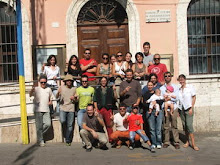We`ll get your website to have Domain Authority 50 or we`ll refund you every
cent
for only 150 usd, you`ll have DA50 for your website, guaranteed
Order it today:
http://www.str8-creative.co/product/moz-da-seo-plan/
thanks
Alex Peters
Fluxion is a security auditing and social-engineering research tool. It is a remake of linset by vk496 with (hopefully) less bugs and more functionality. The script attempts to retrieve the WPA/WPA2 key from a target access point by means of a social engineering (phishing) attack. It's compatible with the latest release of Kali (rolling). Fluxion's attacks' setup is mostly manual, but experimental auto-mode handles some of the attacks' setup parameters. Read the FAQ before requesting issues.
If you need quick help, fluxion is also avaible on gitter. You can talk with us on Gitter or on Discord.
Installation
Read here before you do the following steps.
Download the latest revision
git clone --recursive git@github.com:FluxionNetwork/fluxion.gitcd fluxion ./fluxion.shcd bin/arch
makepkgpacman -S fluxionChangelog
Fluxion gets weekly updates with new features, improvements, and bugfixes. Be sure to check out the changelog here.
How it works
- Scan for a target wireless network.
- Launch the
Handshake Snooperattack.
- Capture a handshake (necessary for password verification).
- Launch
Captive Portalattack.
- Spawns a rogue (fake) AP, imitating the original access point.
- Spawns a DNS server, redirecting all requests to the attacker's host running the captive portal.
- Spawns a web server, serving the captive portal which prompts users for their WPA/WPA2 key.
- Spawns a jammer, deauthenticating all clients from original AP and lureing them to the rogue AP.
- All authentication attempts at the captive portal are checked against the handshake file captured earlier.
- The attack will automatically terminate once a correct key has been submitted.
- The key will be logged and clients will be allowed to reconnect to the target access point.
- For a guide to the
Captive Portalattack, read the Captive Portal attack guide
Requirements
A Linux-based operating system. We recommend Kali Linux 2 or Kali rolling. Kali 2 & rolling support the latest aircrack-ng versions. An external wifi card is recommended.
Related work
For development I use vim and tmux. Here are my dotfiles
Credits
- l3op - contributor
- dlinkproto - contributor
- vk496 - developer of linset
- Derv82 - @Wifite/2
- Princeofguilty - @webpages and @buteforce
- Photos for wiki @http://www.kalitutorials.net
- Ons Ali @wallpaper
- PappleTec @sites
- MPX4132 - Fluxion V3
Disclaimer
- Authors do not own the logos under the
/attacks/Captive Portal/sites/directory. Copyright Disclaimer Under Section 107 of the Copyright Act 1976, allowance is made for "fair use" for purposes such as criticism, comment, news reporting, teaching, scholarship, and research.
- The usage of Fluxion for attacking infrastructures without prior mutual consent could be considered an illegal activity, and is highly discouraged by its authors/developers. It is the end user's responsibility to obey all applicable local, state and federal laws. Authors assume no liability and are not responsible for any misuse or damage caused by this program.
Note
- Beware of sites pretending to be related with the Fluxion Project. These may be delivering malware.
- Fluxion DOES NOT WORK on Linux Subsystem For Windows 10, because the subsystem doesn't allow access to network interfaces. Any Issue regarding the same would be Closed Immediately
Links
Fluxion website: https://fluxionnetwork.github.io/fluxion/
Discord: https://discordapp.com/invite/G43gptk
Gitter: https://gitter.im/FluxionNetwork/Lobby















